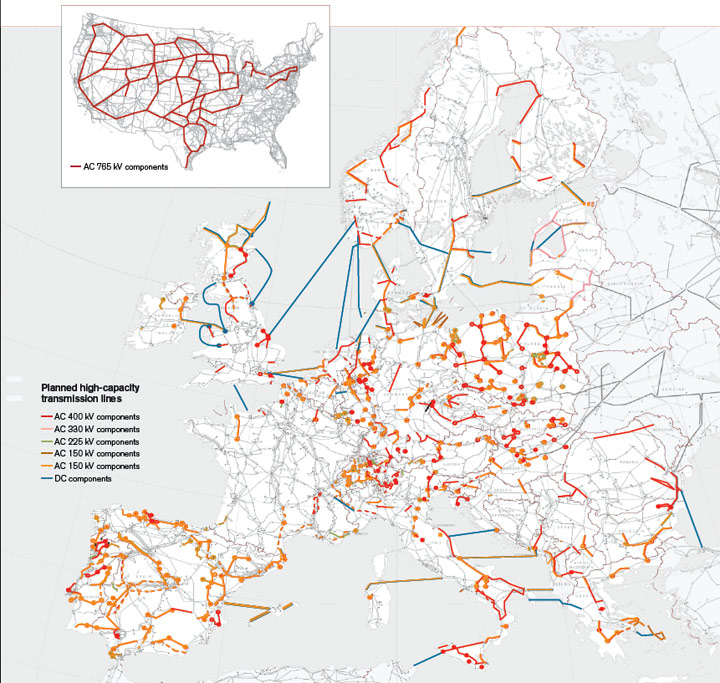Joining the Dots

Assembled piecemeal over the last 100 years or so, power-grid networks now span entire continents, with regional distribution grids stitched together through interconnects. Improving the ability of operators to balance variations in supply and demand will require the construction of new high-capacity transmission lines to share power over larger areas. Because Europe has a more uniform population density than the United States, fewer long-distance lines are required. In the United States, these lines are necessary to transfer renewable power from the windy heartland and sunny Southwest to the heavily populated coasts.
Keep Reading
Most Popular
Large language models can do jaw-dropping things. But nobody knows exactly why.
And that's a problem. Figuring it out is one of the biggest scientific puzzles of our time and a crucial step towards controlling more powerful future models.
The problem with plug-in hybrids? Their drivers.
Plug-in hybrids are often sold as a transition to EVs, but new data from Europe shows we’re still underestimating the emissions they produce.
Google DeepMind’s new generative model makes Super Mario–like games from scratch
Genie learns how to control games by watching hours and hours of video. It could help train next-gen robots too.
How scientists traced a mysterious covid case back to six toilets
When wastewater surveillance turns into a hunt for a single infected individual, the ethics get tricky.
Stay connected
Get the latest updates from
MIT Technology Review
Discover special offers, top stories, upcoming events, and more.